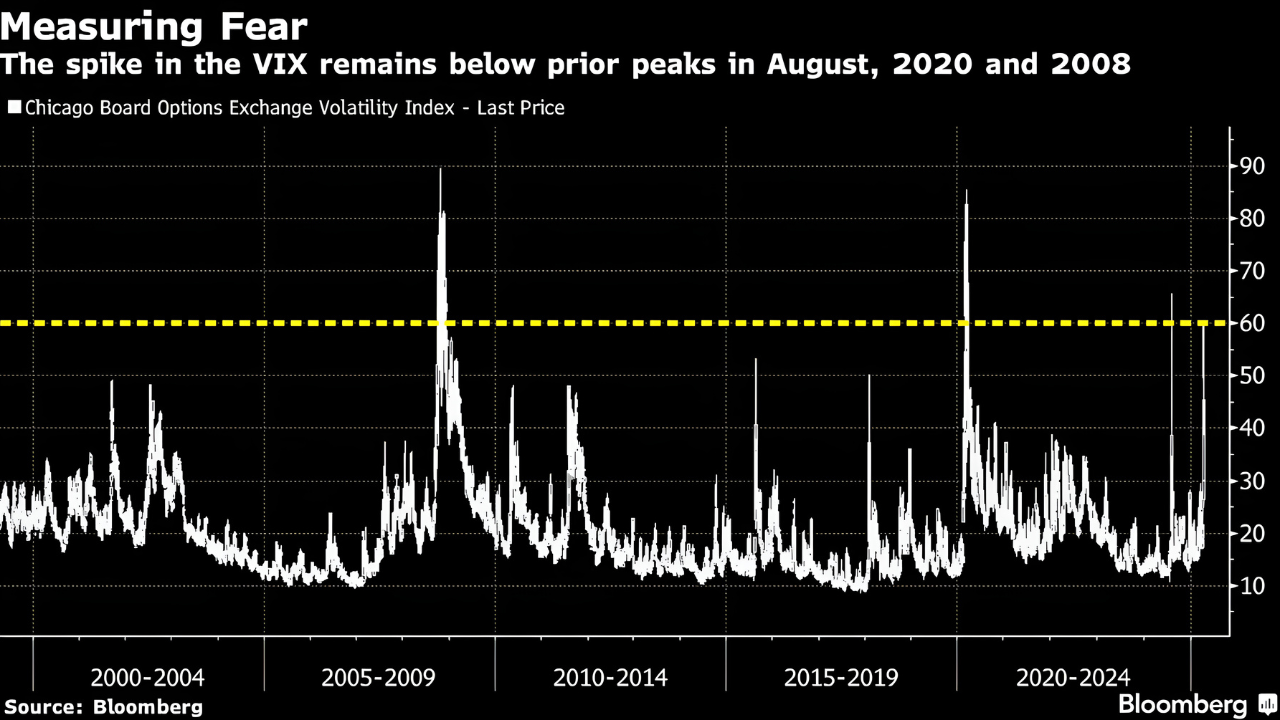
By: Rimi
Published on: Apr 08, 2025
By Robert Brand | April 8, 2025
Global stocks staged a robust recovery on Tuesday, shaking off the worst three-day selloff since 2020, as Japan’s progress in trade negotiations injected cautious optimism into markets. Investors shifted focus to potential U.S. trade deals, tech rallies, and mixed signals from the Trump administration, fueling a rebound in risk assets.
U.S. equity futures surged over 2% in premarket trading, with the tech-heavy Nasdaq 100 climbing 2.5%. Leading the charge was Nvidia Corp. (NASDAQ: NVDA), which spearheaded gains among the "Magnificent Seven" tech megacaps. Apple Inc. (NASDAQ: AAPL) also rose 1%, offering respite after a 19% plunge over three days amid concerns about slowing iPhone demand.
Key Drivers:
Premarket Momentum: Renewed appetite for tech stocks signaled investor confidence in sector resilience.
Treasury Yields Rise: The 10-year Treasury yield climbed 3 basis points to 4.22%, reflecting a risk-on shift.
Dollar Weakness: The Bloomberg Dollar Spot Index fell 0.4%, easing pressure on emerging markets.
The Nikkei 225 soared 6% after Japan advanced discussions with the U.S. on easing tariffs, setting a hopeful tone for global trade. Analysts noted that President Donald Trump’s openness to negotiations—despite his erratic tariff threats—offered a temporary reprieve.
Elias Haddad, Senior Strategist at Brown Brothers Harriman, cautioned:
“While Japan’s progress is encouraging, the uncertainty around U.S. trade policies remains a major risk. Relief rallies may be short-lived if tariff threats escalate.”
The Trump administration sent mixed signals, rejecting an EU proposal to eliminate industrial goods tariffs while threatening a 50% levy on Chinese imports. Investors grappled with whether these moves were tactical negotiations or precursors to deeper trade wars.
Key Developments:
EU Rejection: Trump dismissed a bilateral tariff elimination plan, prioritizing domestic manufacturing.
China Threat: Additional tariffs on $200 billion of Chinese goods loomed, risking global supply chains.
Small Business Risks: The CDFI Fund aid for housing and small businesses faced cuts under Trump’s order.
Despite the rebound, institutions like BlackRock Inc. and Goldman Sachs Group Inc. (NYSE: GS) warned of prolonged downturns. BlackRock downgraded U.S. equities to neutral, citing recession risks, while Goldman Sachs flagged a potential "cyclical bear market" if economic growth falters.
Michael Kelly, Global Head of Multi-Asset at PineBridge Investments, noted:
“Markets are at a crossroads. The next move hinges on whether tariffs ease or global growth stumbles.”
Europe: The Stoxx 600 rose 2.6%, breaking a four-day losing streak. Automakers and banks led gains.
Asia: Hong Kong’s Hang Seng and China’s CSI 300 climbed as state funds intervened to stabilize markets.
Emerging Markets: The MSCI World Index gained 0.9%, though developing nations remained wary of dollar volatility.
Oil: WTI crude rose 0.6% to $61.07/barrel after a three-day slide.
Gold: Spot gold jumped 0.9% to $3,008.97/ounce as investors hedged against trade uncertainties.
Crypto: Bitcoin (BTC) and Ethereum (ETH) edged up 1.2% and 0.5%, respectively, amid risk appetite.
With U.S. equities facing headwinds, the MLIV Pulse survey explores opportunities in global markets. Key considerations include:
Diversification: Balancing exposure to U.S. tech with emerging markets and European value stocks.
Bond Market Caution: Rising Treasury yields may pressure growth stocks, favoring short-duration assets.
Sector Rotation: Energy and industrials could benefit from infrastructure spending, while tech faces valuation scrutiny.
U.S. Treasury Auctions: Demand for 3-, 10-, and 30-year bonds will test investor confidence.
Earnings Season: Tech giants’ Q1 reports could dictate market momentum.
Trade Negotiations: Progress (or stalemate) in U.S.-Japan/EU talks will sway sentiment.
While Tuesday’s rebound offered relief, markets remain at the mercy of trade policy shifts and recession fears. Investors should prioritize liquidity, diversify globally, and stay attuned to geopolitical developments. As Trump’s tariff tactics evolve, the line between negotiation and disruption grows thinner—making agility essential in 2025’s uncertain landscape.
Comments
No comments yet. Be the first to comment!
Leave a Comment